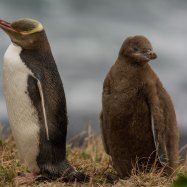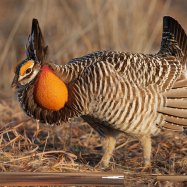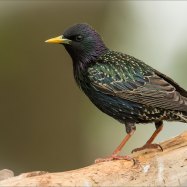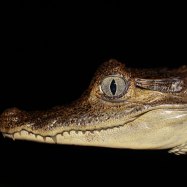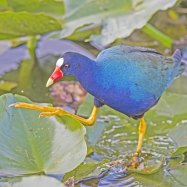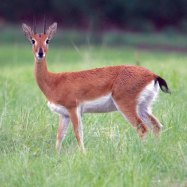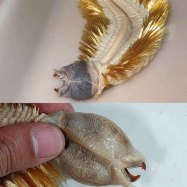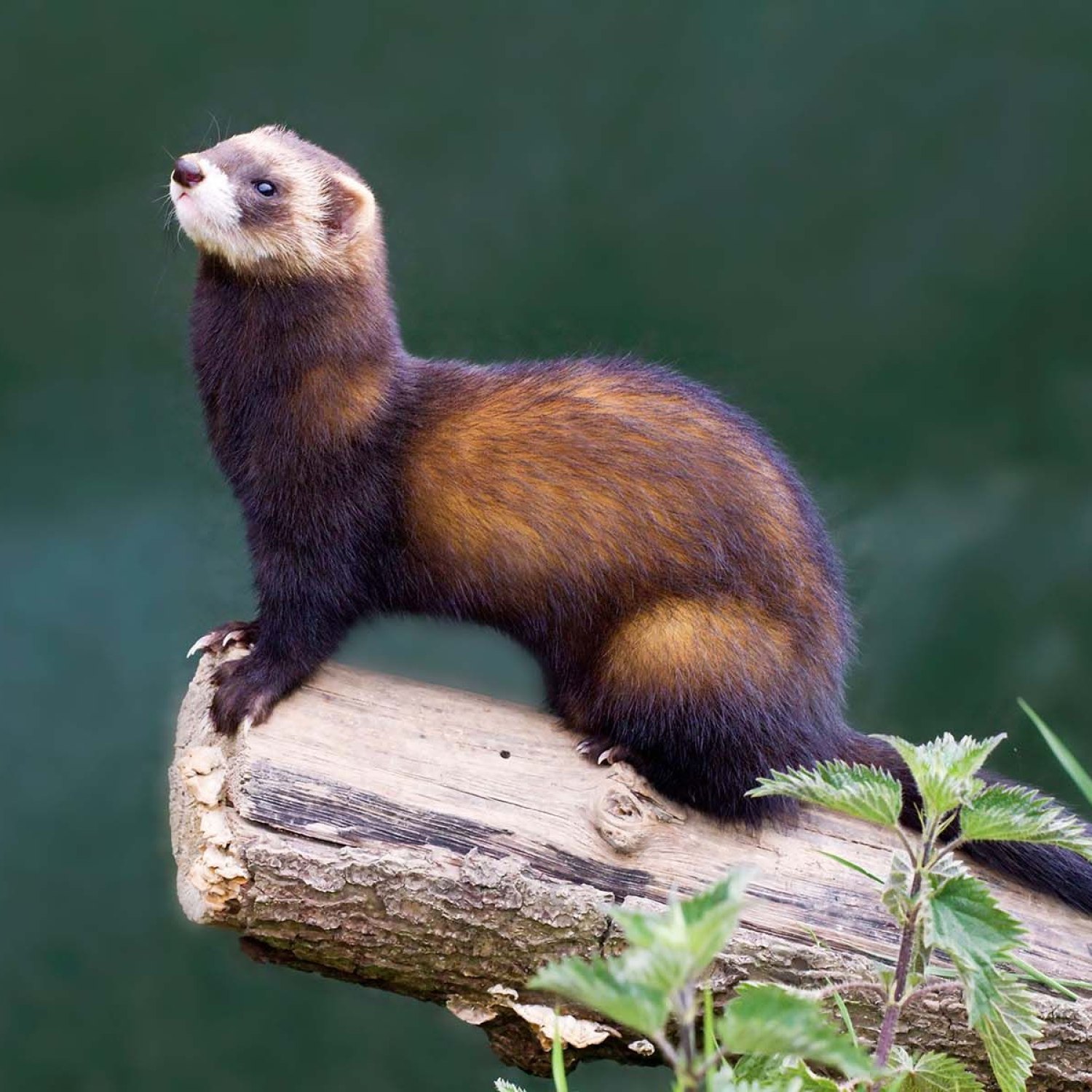
Polecat
40 to 50 cm
The Polecat, also known as the European polecat, is a member of the Mustelidae family and can be found in European countries like the United Kingdom, France, and Germany. It has a slender and elongated body with short legs, and can grow up to 40-50 cm in length. Despite its name, it is not related to cats and is actually a type of weasel. Keep an eye out for this intriguing animal on your next trip to Europe! #Polecat #Mustelidae #EuropeanAnimals
Animal Details Summary:
Common Name: European Polecat
Kingdom: Animalia
Habitat: Woodlands, grasslands, farmlands, wetlands
The Mysterious and Misunderstood European Polecat
The European Polecat, scientifically known as Mustela putorius, is a fascinating and enigmatic creature that roams the woodlands and farmlands of Europe, North Africa, and Asia. With its dark brown to black fur, slender body, and carnivorous feeding method, the European Polecat may seem intimidating at first glance. However, once you get to know this elusive creature, you will realize that it is one of the most captivating and crucial animals in the natural world.A Member of the Mustelidae Family
The European Polecat belongs to the kingdom Animalia and the phylum Chordata, making it a member of the animal kingdom with a backbone Polecat. It also falls under the class Mammalia, making it a mammal, and the order Carnivora, alongside other carnivorous animals like wolves, lions, and bears. Within the order Carnivora, the European Polecat is a member of the Mustelidae family, which includes other species such as ferrets, weasels, and otters.Interestingly, the name "mustelidae" is derived from the Latin word "mustelus," meaning "weasel." This is aptly named as the European Polecat has similar physical characteristics to other mustelids, including a slender and elongated body with short legs.
The Habitat and Diet of the European Polecat
The European Polecat is a widely distributed animal, found in various habitats, including woodlands, grasslands, farmlands, and wetlands. This adaptable creature can thrive in diverse environments, from the mountainous regions of the Alps to the lowlands of Europe. However, despite this widespread distribution, the European Polecat is most commonly found in European countries such as the United Kingdom, France, and Germany, hence its common name, "European Polecat."As a carnivorous animal, the European Polecat primarily feeds on small mammals like voles, mice, and rabbits. They also consume insects, reptiles, and birds, making them a vital part of the food chain in their respective habitats Peacock Butterfly. As efficient hunters, the European Polecat hunts at night, using its sharp teeth and keen sense of smell to track down its prey. Interestingly, they are also known to make use of their agile bodies to climb trees and hunt for birds and their eggs.
Despite being carnivorous, the European Polecat also plays a crucial role in maintaining ecological balance. For example, in farmlands, they feed on pests such as rats and mice, reducing the need for harmful pesticides.
The Colorful Coat of the European Polecat
One of the most striking features of the European Polecat is its dark brown to black fur with a lighter underbelly. This coloration is crucial for their survival, as it acts as camouflage, allowing them to blend seamlessly into their surroundings. This makes them less visible to potential predators, which include birds of prey, foxes, and badgers.Another interesting fact about the European Polecat's fur is that it secretes a strong-smelling musk, which gives the animal its scientific name, M. putorius, meaning "stinking weasel." This musky odor serves as a defense mechanism, warding off predators and also playing a role in territorial marking.
The Mating and Reproduction of the European Polecat
The mating and reproductive behaviors of the European Polecat are also quite fascinating. They are solitary animals, with males and females only coming together during the breeding season, which typically occurs in March or April.During this time, the male polecats display an interesting courtship behavior, releasing a strong musk to attract a female. Once a female is attracted, they will mate and then go their separate ways. However, in some cases, a female may choose to mate with multiple males during the breeding season.
After a gestation period of around 40 days, the female will give birth to a litter of 3-5 kits. These young polecats are born blind and helpless, but they grow rapidly, becoming independent and able to hunt for themselves at around 4 months old. Interestingly, the European Polecat's reproductive cycle is closely linked to the availability of food in their environment. This means that in areas with abundant prey, they may breed twice a year, while in leaner habitats, they may not breed at all.
The Importance of Conservation Efforts
The European Polecat has faced many challenges throughout history, primarily due to hunting for its prized fur. During the 19th and 20th centuries, polecats were nearly extinct in many parts of Europe due to excessive trapping. However, through conservation efforts such as breeding and reintroduction programs, the population of European Polecats has increased in recent years, and they are no longer considered an endangered species.Today, the biggest threat to the European Polecat comes from habitat loss and fragmentation, as well as road accidents. As humans continue to expand and develop their surroundings, it is important to implement measures that protect and preserve the natural habitats of these animals. This includes creating wildlife corridors and implementing speed limits in areas that are known to have high polecat populations.
The European Polecat and Human Perception
Despite its important role in the ecosystem, the European Polecat has been met with a mix of fascination and fear from humans. Due to their elusive nature, they are often misunderstood and have been the subject of many misconceptions. In the past, they were often seen as a pest, with farmers hunting them to protect their livestock. However, as people become more educated about their significance in nature, attitudes towards the European Polecat are changing.In fact, in some areas of Europe, the European Polecat is considered a valuable species, and efforts are being made to protect and conserve their populations. In the United Kingdom, for example, they are a legally protected species, and there are initiatives in place to monitor and track their numbers in different regions.
In Conclusion
The European Polecat, with its dark and mysterious appearance, has been a source of intrigue for centuries. Its cunning hunting skills, unique coloration, and crucial role in the environment make it a captivating creature that deserves our admiration and protection. With conservation efforts in place, we can ensure that the European Polecat continues to roam the woodlands and farmlands of Europe, playing its vital role in the delicate balance of nature. So, let's appreciate and recognize the importance of this species while exploring the natural world around us.

Polecat
Animal Details Polecat - Scientific Name: Mustela putorius
- Category: Animals P
- Scientific Name: Mustela putorius
- Common Name: European Polecat
- Kingdom: Animalia
- Phylum: Chordata
- Class: Mammalia
- Order: Carnivora
- Family: Mustelidae
- Habitat: Woodlands, grasslands, farmlands, wetlands
- Feeding Method: Carnivorous
- Geographical Distribution: Europe, North Africa, Asia
- Country of Origin: Europe
- Location: European countries like the United Kingdom, France, and Germany
- Animal Coloration: Dark brown to black fur with a lighter underbelly
- Body Shape: Slender and elongated body with short legs
- Length: 40 to 50 cm
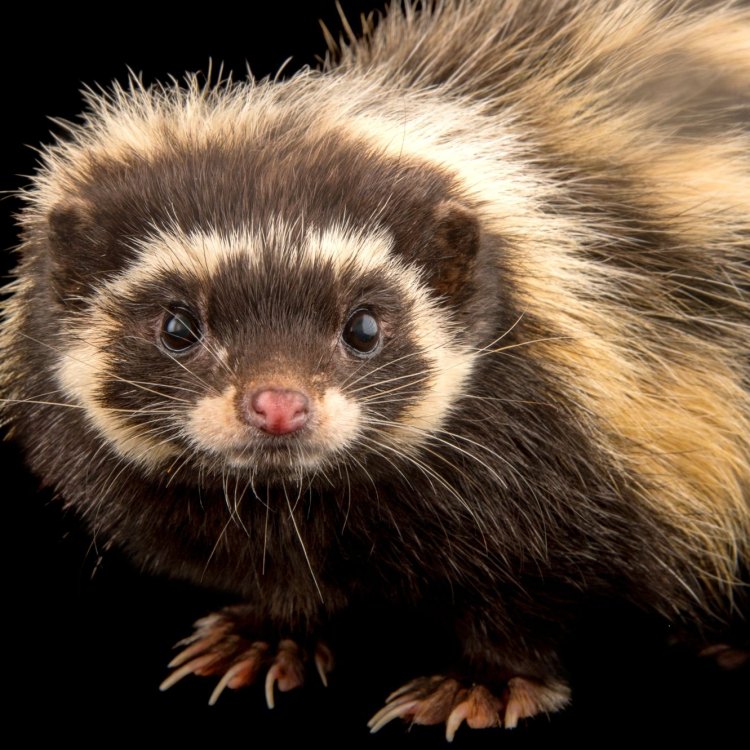
European Polecat
- Adult Size: Small to medium-sized
- Average Lifespan: 3 to 5 years
- Reproduction: Sexual
- Reproductive Behavior: Polygynous
- Sound or Call: High-pitched squeals and hisses
- Migration Pattern: Non-migratory
- Social Groups: Solitary
- Behavior: Nocturnal and territorial
- Threats: Habitat loss, road mortality, persecution by humans
- Conservation Status: Least Concern
- Impact on Ecosystem: Controls rodent populations
- Human Use: Fur trapping
- Distinctive Features: Bushy tail, anal scent glands
- Interesting Facts: Can emit a strong-smelling musk when threatened
- Predator: Large birds of prey, foxes, and wildcats
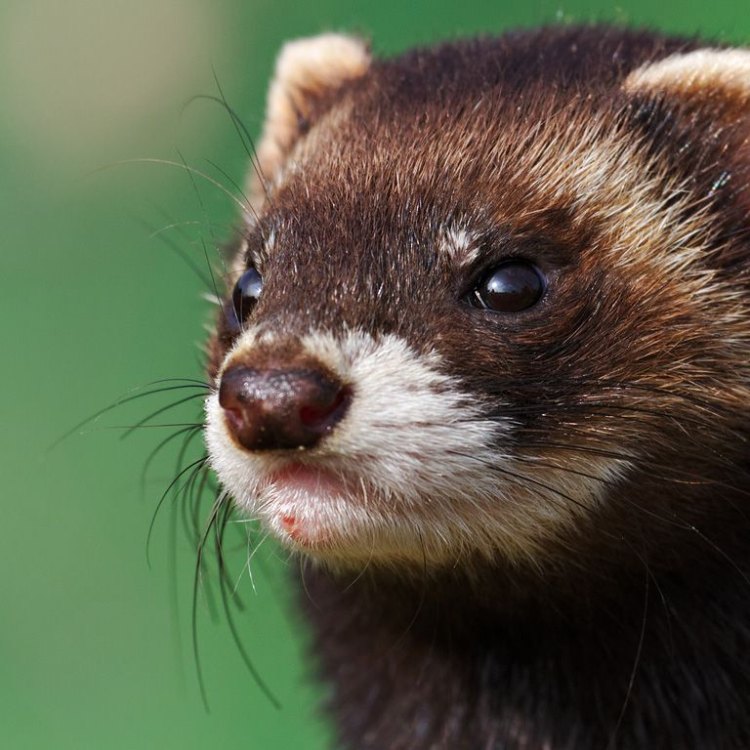
Mustela putorius
The Fascinating World of the Polecat
In the vast and diverse animal kingdom, there are many fascinating creatures that capture our attention and spark our curiosity. One such animal is the polecat. Despite its somewhat unfortunate name, the polecat is a small but mighty mammal that holds many unique features and behaviors – making it an intriguing subject for study.The polecat, also known as a European polecat or a common ferret, belongs to the Mustelidae family, which includes weasels, badgers, and otters PeaceOfAnimals.Com. Native to Europe and Western Asia, these small to medium-sized animals are renowned for their elusive nature and their ability to survive in harsh environments. Despite their solitary and nocturnal lifestyle, they have captured the hearts and interest of many nature enthusiasts and researchers.
In this article, we will delve deeper into the world of the polecat and explore its distinctive features, behavior, threats, and impact on the ecosystem.
Size and Lifespan
The polecat is a small to medium-sized mammal, measuring around 30-46 cm (11-18 inches) in length, with a tail that is approximately 12-23 cm (5-9 inches). They weigh around 0.6-1.2 kg (1.3-2.6 pounds), with males being slightly larger than females Palaeoloxodon Namadicus.With an average lifespan of 3 to 5 years, polecat populations are generally short-lived. However, in captivity, they have been known to live up to 7 years, with proper care and nutrition. Due to their short lifespan, they breed quite frequently and can produce multiple litters in a single year.
Reproduction and Reproductive Behavior
Polecats are sexual reproducers, with a polygynous mating system. This means that males will mate with multiple females during the breeding season, while females will only mate with one male. Breeding typically takes place from March to June, with the male approaching the female with a series of mating rituals, including chasing and vocalizations.After a gestation period of about 40 days, the female will give birth to a litter of 3 to 8 kits. These kits are born blind and hairless and are completely dependent on their mother for survival. The kits will open their eyes after 7 to 9 days and will start exploring their surroundings after 4 weeks. They will reach sexual maturity at around 10 months old.
Communication: Sounds and Calls
Polecats are known to be vocal animals, using a variety of sounds and calls to communicate with one another. They are capable of producing a wide range of vocalizations, including high-pitched squeals and hisses, which are used to express aggression or defense.They also use scent marking as a mode of communication, leaving their scent on trees, rocks, and other objects in their territory using their anal scent glands. This not only helps them to communicate with other polecats but also serves as a way of marking their territory.
Migration Patterns and Social Groups
Unlike many other small mammals, polecats are non-migratory animals and tend to stay in one area throughout their entire life. They are solitary animals and do not live in groups or packs. They have a large territory which they mark and defend aggressively from other polecats.Behavior: Nocturnal and Territorial
Polecats are primarily nocturnal animals, meaning they are most active at night. This is likely due to their secretive and solitary nature, as well as their tendency to avoid competition for resources with other predators, such as foxes and wildcats, who are more active during the day.As mentioned before, polecats are territorial animals and will defend their territory fiercely. They are also solitary hunters, using their sharp teeth and claws to catch prey, which includes mice, rats, rabbits, small birds, and occasionally, reptiles and amphibians.
Threats and Conservation Status
The polecat's elusive nature has made it difficult to determine its actual population size. However, it is estimated that they are relatively stable, with no significant decline in numbers. As a result, the International Union for Conservation of Nature (IUCN) has classified them as "Least Concern" on the conservation status scale.Despite this, polecats still face several threats, including habitat loss, road mortality, and persecution by humans. Due to their fur, polecats have been heavily targeted by fur trapping, which has caused a significant impact on their populations in some areas. However, strict regulations on trapping have helped to control this threat in recent years.
Impact on the Ecosystem
The polecat may be small, but it plays a crucial role in its ecosystem – controlling rodent populations. As mentioned before, these mammals are skilled hunters and prey on small rodents, which can often be considered pests in agricultural areas. By keeping these populations in check, polecats help maintain a balance in the ecosystem, preventing any overgrazing or damage caused by an abundance of rodents.Human Use: Fur Trapping
Fur trapping has been a significant human use of polecats for centuries. The fur of the polecat is unique, with a brownish-black base and a cream-colored underfur, making it desirable in the fur trade. However, as mentioned before, strict regulations and conservation efforts have helped to reduce the impact of this human use on the polecat's population.Distinctive Features and Interesting Facts
Polecats have many distinctive features that set them apart from other mammals. The most obvious one is their bushy tail, which can make up to 70% of their body length. They also have anal scent glands, which produce a strong-smelling musk that they can emit when threatened. This musk serves as a defense mechanism, helping them to deter predators.Some other interesting facts about polecats include:
- They are known to exhibit a behavior called "sidling," where they move with a sideways shuffle, resembling a dance.
- In ancient Rome, polecats were kept as pets and used for hunting.
- They are excellent climbers and swimmers.
- Despite their similar appearance, polecats and ferrets are two distinct species, although they can interbreed.
- The word "polecat" comes from the French word "poule cat" meaning "chicken cat," as they were often seen near chicken coops.
In Conclusion
The world of the polecat is truly fascinating, with its distinctive features, behaviors, and role in the ecosystem. Despite facing threats and being heavily used by humans, these small mammals have managed to maintain their populations and continue to thrive in their natural habitats. As with any species, it is essential to continue efforts towards their conservation to ensure that they remain an integral part of our diverse and ever-changing ecosystem and continue to intrigue and amaze us for years to come.
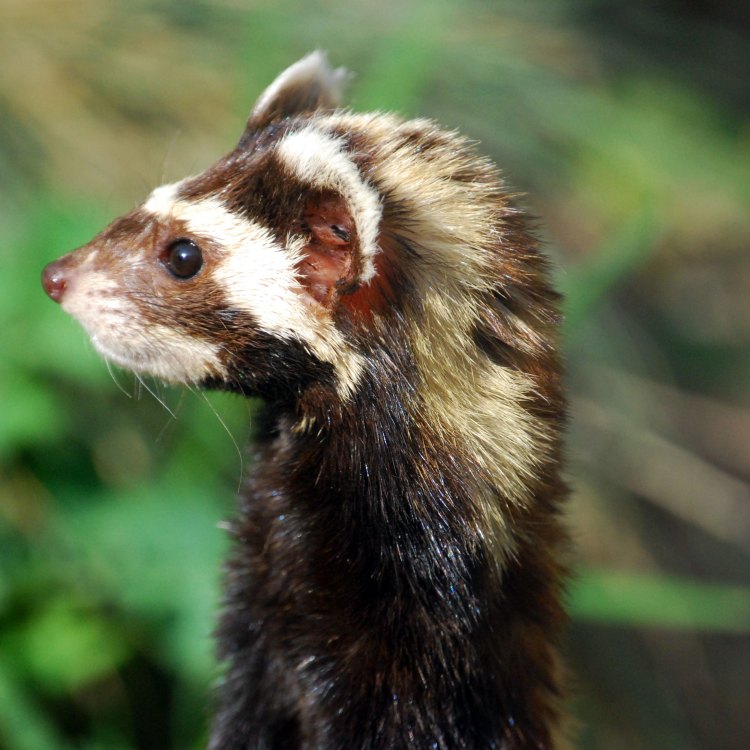
The Mysterious and Misunderstood European Polecat
Disclaimer: The content provided is for informational purposes only. We cannot guarantee the accuracy of the information on this page 100%. All information provided here may change without prior notice.

